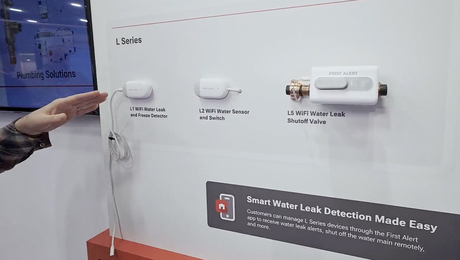More details, less white space
I am one of those old crotchety guys who have every issue of Fine Homebuilding. I have seen lots of changes over the years—enjoyed some and tolerated others.
Several years ago, the format was changed to feature lots of white space. It makes for a pretty magazine, but it comes at a cost: less text. Countless short articles are little more than an intro and a closing with not much in between.
In the June/July issue (FHB #188), Andy Engel wrote in to point out the importance of placing Lally columns in the center of the footing and using 2500-psi concrete. Mike Guertin responded that “we didn’t have room for all of those details in the article.” Somehow you found 5 column inches for the letter and response, but you couldn’t cram in all those “details” the first time around.
I realize that editing involves compromise and that lots of good material has to end up on the floor, but I would advocate that there be more emphasis on completeness and less on white space.
—Al Pillsbury Foxboro, Mass.
Kevin Ireton replies: What’s at stake here is not, as you suggest, text. It’s information, which can be conveyed in text, photos, or drawings (but not in white space, I’ll admit). If you go back and reread some of those old articles, you’ll find that a lot of the text simply repeated information conveyed in the accompanying photos and drawings (or should have been).
As for the white space, it serves a critical role. Some of those old articles you’re referring to were like meals served up with an ice-cream scoop at an all-you-can-eat buffet. If people were starving for information, they ate. If not, they turned the page. Our goal is to serve up just the right amount of information, and to present it artfully. Do we always get it right? No. But if you look back at the “Letters” columns in those old text-heavy issues, you’ll find one thing has never changed: Then, as now, readers always suggest things we should have included.
Not all polyurethane depletes the ozone
I read with interest your “What’s the Difference?” article (Houses, FHB #187, p. 120) in which you weigh the pros and cons of three foam-core types of structural insulated panels. As the marketing manager for The Murus Company, I take issue with the statement that you made about polyurethane. Under “cons,” you list ozone-depleting HCFC-based expanding agents. In fact, The Murus Company has not used an HCFC-based expanding agent in our polyurethane foam for more than three years. The Murus Company’s current polyurethane-foam system uses an expanding agent that has no deleterious effect on the ozone layer.
—Linda Lee, Mansfield, Pa.
Some locales prohibit air-admittance valves
As a plumbing and heating contractor, I found Rex Cauldwell’s article Better Undersink Plumbing (FHB #188, pp. 62-63) frustrating. You cannot use air-admittance valves in a number of states yet, and definitely not where I live. In areas that allow an air-admittance valve, you are required to run it up as high as possible under the sink countertop.
I am not arguing that Rex’s method won’t work, but why not check the plumbing codes before putting such an article in your magazine?
—Steve Eayrs, Homer, Alaska
Author Rex Cauldwell replies: The International Plumbing Code (IPC) allows air-admittance valves (AAVs; see section 917 of the IPC commentary) and has for many, many years. You, however, are unlucky enough to be in a jurisdiction that is still in the dark ages. AAVs work just fine, and the states that don’t allow them might be politically motivated (in my opinion) to keep them out. When AAVs are used, they significantly lower the cost of the house.
As for running an air-admittance valve “as high as possible under the sink countertop,” that’s incorrect. You are required to follow the manufacturer’s installation instructions, which will always be a set number of inches above the trap (the IPC says 4 in.). Running the AAV as high as possible (for example, bumping it up against the underside of the sink or countertop) is against the code and is also against the manufacturer’s instructions because that placement prevents the AAV from being unscrewed and replaced.
When the wedding ring goes down the drain?
Regarding Rex Cauldwell’s article Better Undersink Plumbing, I have a question. When my customer drops her wedding ring down the drain, I have to remove three screw clamps, work off three rubber elbows, and maybe the dishwasher drain, then shake it out? What if it’s a Popsicle stick that gets stuck in the trap?
Compression joints sometimes leak, but they come off with two collars. Then just the trap with the “item” in it comes off. Rex should throw a little more thought into this one.
—Louis F. De Geofroy, West Tisbury, Mass.
Rex Cauldwell replies: The system was designed to prevent the rotting out of the kitchen cabinet due to the most annoying of drain problems: a leaky-drain compression joint. Typically, one bump from someone storing cleaners under the sink, and we have a leak. And let’s not forget the problem of the metal drain nuts corroding and having to be cut off. These problems might be good for the home centers that sell cabinets, strainers, and drainpipe, but they don’t help those who have to shell out the money.
This is why I designed the system shown in the article. Not only does it open space for storage, but you can bump things to your heart’s delight, and there will be no leaks. As for removing the trap, there is no working off the elbows and such. The elbows slide off in a microsecond. It takes less than 15 seconds to remove the system (half as much if you use a cordless screwdriver and a hex driver). Once you drop the elbow, you reach in to remove the ring or the Popsicle stick. Of course, you could install a trap with a removable plug to get the ring.
Nail-gun safety
I enjoyed Michael Ayers’s excellent article on deck details (Custom Details Make a Better Deck, FHB #188, pp. 46-51), but I winced when I saw the cover of your June/July issue. The guy in the photograph is doing a common and dangerous thing: holding the end of a piece of lumber while nailing it to an intersecting board with a pneumatic nailer. I learned the hard way how dangerous this can be back when I was on a job site doing a similar thing while framing. A nail I shot was diverted by the wood grain in the stud and punctured my index finger. It wasn’t bleeding and the pain wasn’t bad, so I kept working. The wound got infected and culminated in a three-day hospital stay and arthroscopic surgery; the infection got into my system and ended up in my left knee. The practice of holding/aligning is also shaky given the tendency to bounce-fire on occasion. It’s that second nail that’ll get you.
A better strategy is a couple of Quick-Grip type of clamps: one to hold the stud or joist in plane with its mate and the other as a stop to align the stud with the layout line. Then you can keep your hand at a safe distance. I know it takes a little longer, but it could save you hours, days, and even months of aggravation in the long run.
—Roe A. Osborn, Harwich, Mass.
Senior editor Daniel S. Morrison replies: As the guy who shot the cover photo, I should explain that Michael is not actually holding the 2×4 snug with his grip up against the mating board. He’s aligning the two boards with his thumb on top, and he’s shooting a nail in the bottom. Rather than gripping the 2×4 in question, his fingers are bent back out of view in a sort of half fist. The 2×4 is already nailed in two places (at the post against the house and at the half post at midspan on the bench), so he doesn’t have to hold it up. He’s flushing up (actually down) the framing. There were no knots in either piece of wood.
I can recall these details because I, too, am pretty aware of nail-gun safety. I was shot through the thumb with a 12d framing nail by a colleague who was bounce-firing floor joists into the rim. I was on top lining the joists, and he was on the ground nailing them off. He had his finger clenched to the trigger, so when his bouncefire slipped off the top of the rim, but caught the nosepiece, the nail shot through the air and then through the meaty part of my thumb (even though I had my hand back from the danger zone).
What about by-products of foam panels
In SIPs: Are They Right for Your Next Project? (FHB #188, pp. 56-61), there is no attempt mentioned to control the rigid-foam particulate that is created when drilling, cutting, routing, rasping, or shaping the foam. This by-product is a considerable environmental headache because it doesn’t biodegrade as wood does, and its light weight means it can be borne easily on the lightest breeze. I understand the benefits SIPs offer, but what are the true costs? I have seen polystyrene products being used near lakes, rivers, and oceans with little, if any, attempt to control where the by-product blows. This is not a green product in my eyes, and I would never consider using it because the by-product is virtually uncontrollable on a job site.
—Matthew Rinearson, Seattle
Assistant editor and author John Ross replies: The builders I visited during my research cleaned up at the end of the day, but inevitably, some foam escaped. Could that amount be lessened with more careful attention? You bet, and that should be a goal. But building green means making tough choices. In this case, you have to weigh a cubic foot (or worst case, a cubic yard) of polystyrene released while building an efficient SIP house against 300 extra gallons of home-heating oil burned each year to keep an inefficient house at a comfortable temperature.
Fine Homebuilding Recommended Products
Fine Homebuilding receives a commission for items purchased through links on this site, including Amazon Associates and other affiliate advertising programs.

Affordable IR Camera

Handy Heat Gun

Reliable Crimp Connectors






















